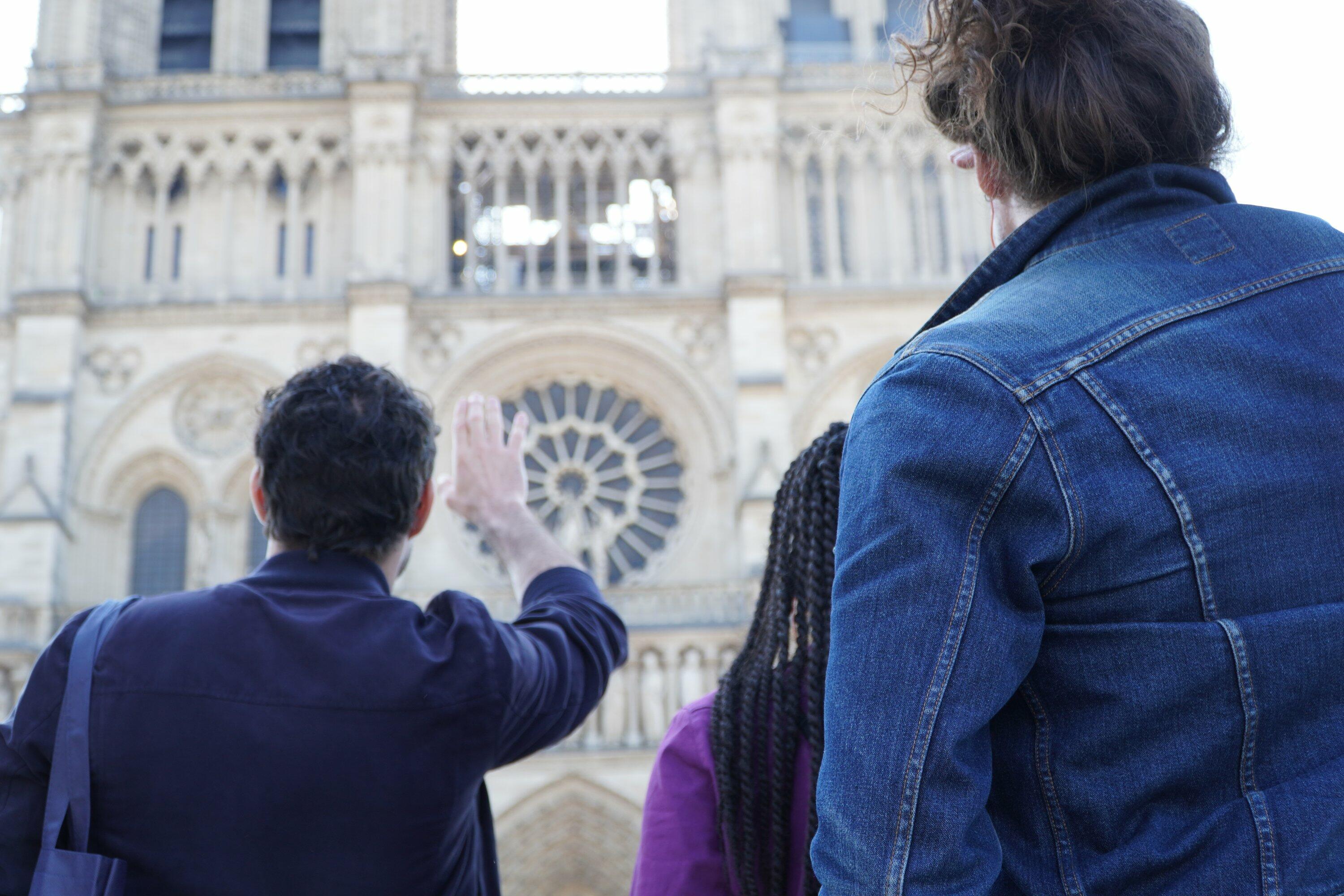As you’ve probably heard, Notre-Dame Cathedral has finally reopened to the public after years of careful restoration following the 2019 fire. We at Memories France are thrilled to welcome visitors back to this iconic monument. To help you make the most of your visit, we’d love to show you around in person—there’s so much more to discover than meets the eye! We have two brand new tours opening early June. But before you step inside, here’s a quick overview to get you ready.
Introduction
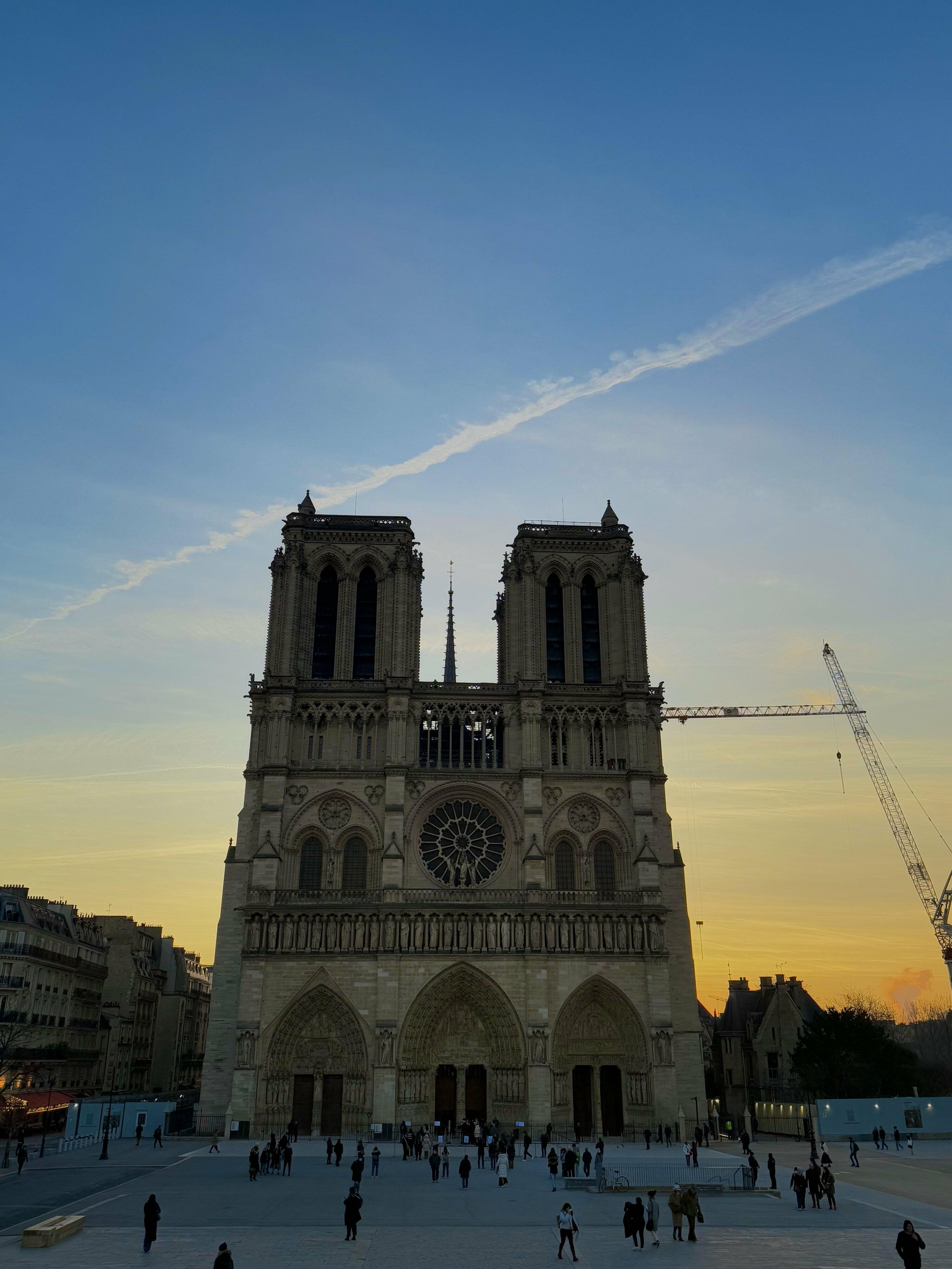
History and Facts to Know Before You Go
- The church that rises with its two iconic towers before your eyes is not the first one to stand there. This whole neighborhood, the Île-de-la-Cité, was once a city called Lutetia, a bustling town that the Romans colonized from the Gauls who had already long been living here.
- Notre-Dame-de-Paris is just the last in a long line of sanctuaries in this spot, dating even back to the Gallo-Roman town, one of which was devoted to Jupiter (you can see traces of it in the Cluny Museum of the Middle Ages nearby). Other Christian churches followed, but never on such a scale.
- No single fortune, private, ecclesiastic, noble or royal, none could have imaginably covered the colossal project that Maurice de Sully, the cathedral’s bishop, knew would take generations to complete. We learn from a medieval records that among lay donations, an important part of the money came from women!
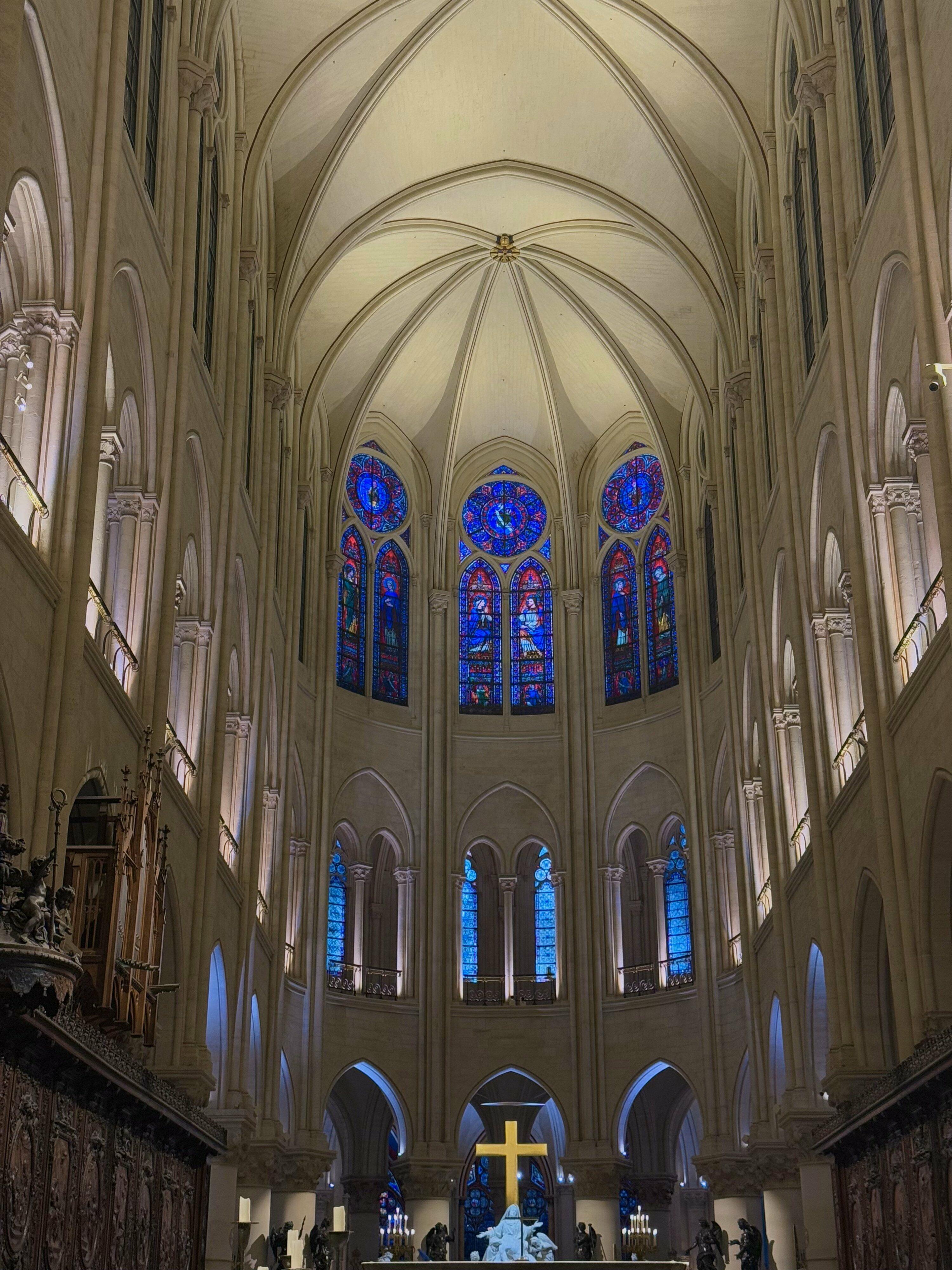
Building Notre-Dame Cathedral
- In the years before 1160, the VIP bishop of Paris got ideas. As the king’s right-hand man, this Maurice de Sully had the power and the influence to make them happen. He conceived of a church to replace the pokey old seat from which he had until then reigned.
- He took some cues from the new inventions just over to the north of Paris, at the basilica of Saint-Denis: pointed arches and ogives that could distribute weight, thus use less stone for the walls, and flooding the interior with light coming through stained glass. With the building blocks of what would eventually become known as Gothic, Maurice de Sully created a church that was longer, wider, and - most importantly - higher than even the twelfth century’s Saint-Peter’s in Rome.
- Ambition like that took a long while to come to pass. By the time the cathedral was standing proud, it was already thought to be dark and gloomy: hopelessly old fashioned. Light was the name of the game, not only the light of the outside sun, filtering in through chains stained glass windows, but also light as in weightless: a tall order for such a church of this size and all the stone it took to hold it up.
- By first decades of the thirteenth century, churchmen decided that Notre-Dame of Paris should be overhauled to outdo any rival. That however meant attempting various architectural innovations and solutions. This meant that the cathedral did not reach completion till 1345!
Far from a simple parish church, what kinds of ceremonies could have taken place in such eminent surroundings?
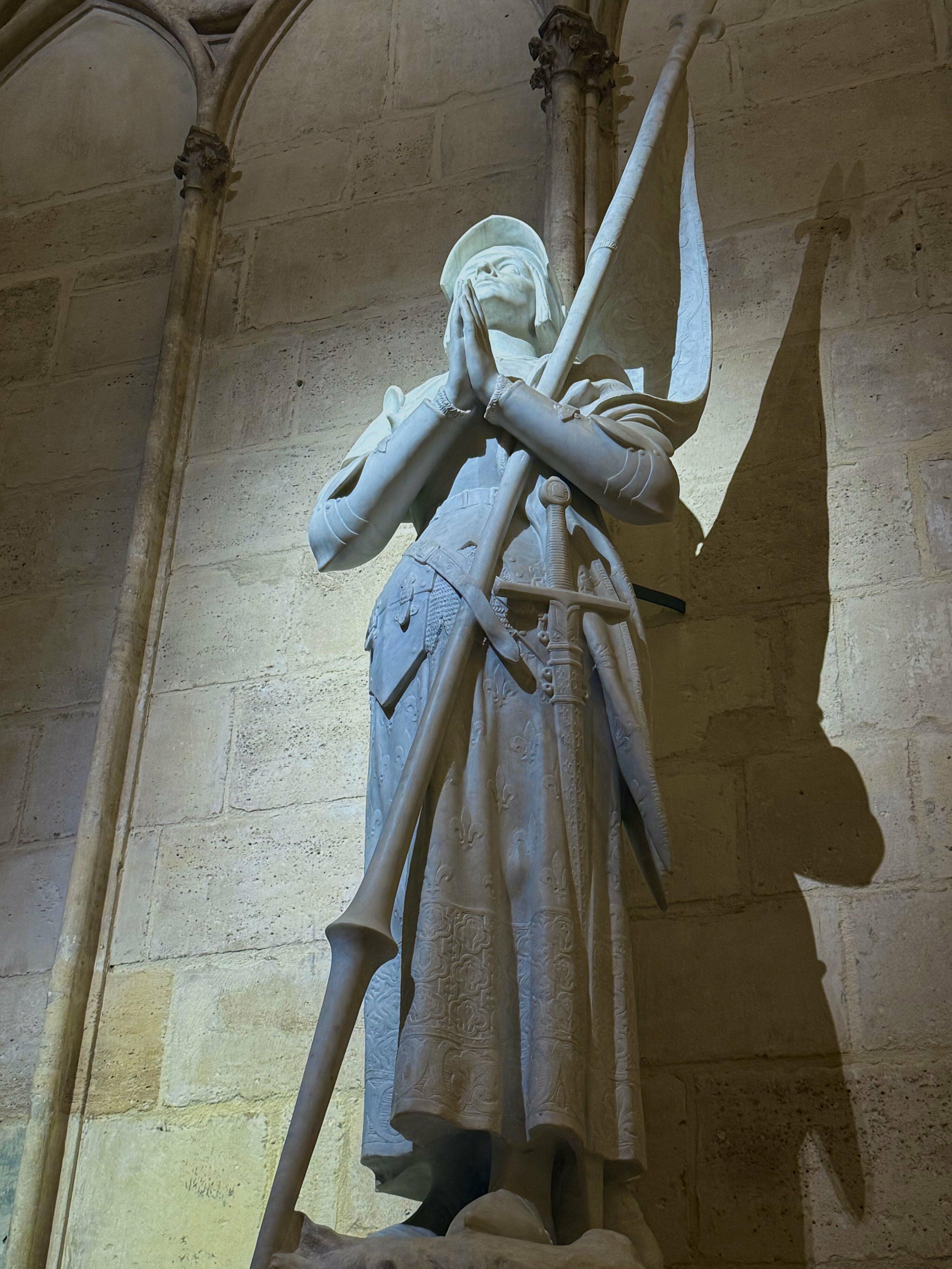
- King Louis IX left his prestigious collection of relics here in 1239, while waiting for the completion of Sainte-Chapelle that was to be their permanent home (although history decided otherwise). These were among the most prized religious treasures of medieval France, and included the Crown of Thorns, believed to be the crown placed on Christ’s head during the Crucifixion, and fragments of the True Cross – pieces said to come from the cross on which Christ was crucified.
- Joan of Arc’s rehabilitation trial took place in 1455, though it was too late for the saint herself, burned at the stake in 1431.
- Royal weddings were held in these walls, like that of Mary Queen of Scots with Francis II (1558) or Queen Margot with Henry IV (1572) that set off the Saint Bartholomew’s Day Massacre, a brutal, state-sanctioned killing of thousands of Protestants by Catholics in Paris, sparked by religious tensions and political fear just days after the wedding that was meant to unite the two sides.
- In this sanctuary, the people celebrated the total abolition of slavery in 1794, while Notre-Dame Cathedral was, under the Revolutionary Government, known as the Temple of Reason.
- It was here that in 1804 Napoleon took the crown from the hands of the pope and crowned himself Emperor, before crowning Josephine Empress. Despite his mother’s presence in the painting hanging in the Louvre, mom refused her invitation, as Josephine was a divorcée.
- It was that very year (coincidentally? We think not.) that the relics of the Sainte-Chapelle made their way back to the cathedral, and they are still there to this day.
- With the ensuing years, the cathedral felt the ravages of Revolutions (the biggie of 1789 then subsequent tremors of 1830 and 1848). As it fell to rack and ruin, writer Victor Hugo thought up a Hunchback as hero and a Roma heroine, whose tale would come to save it from complete disintegration. This novel, which in French bears simply the name of the cathedral, “Our Lady of Paris,” so moved the public that Parisian hearts turned and saved the grande dame with a thorough restoration, an achievement that to this day inspires professionals’ respect.
- Eugène Viollet-le-Duc led the Hugo-inspired restoration of the cathedral in the middle of the nineteenth century. Did you know that when little Eugène was a small child brought to Notre Dame on his father’s shoulder, the organ started up and the little fellow thought it was the rose window screaming at him? Maybe it was calling him to his future vocation!
- A strange enough tidbit is that way high up, a metal rooster, symbol of France, contains bits of relics, including Saint Louis’s cherished Crown of Thorns, protecting the cathedral’s visitors from all harm. The brand new 2023 version replaces another older sculpture.
- While a still-unexplained unexplained fire took the roof and spire of Notre-Dame of Paris in 2019, it’s true that not a single soul (or body) was injured when disaster struck.
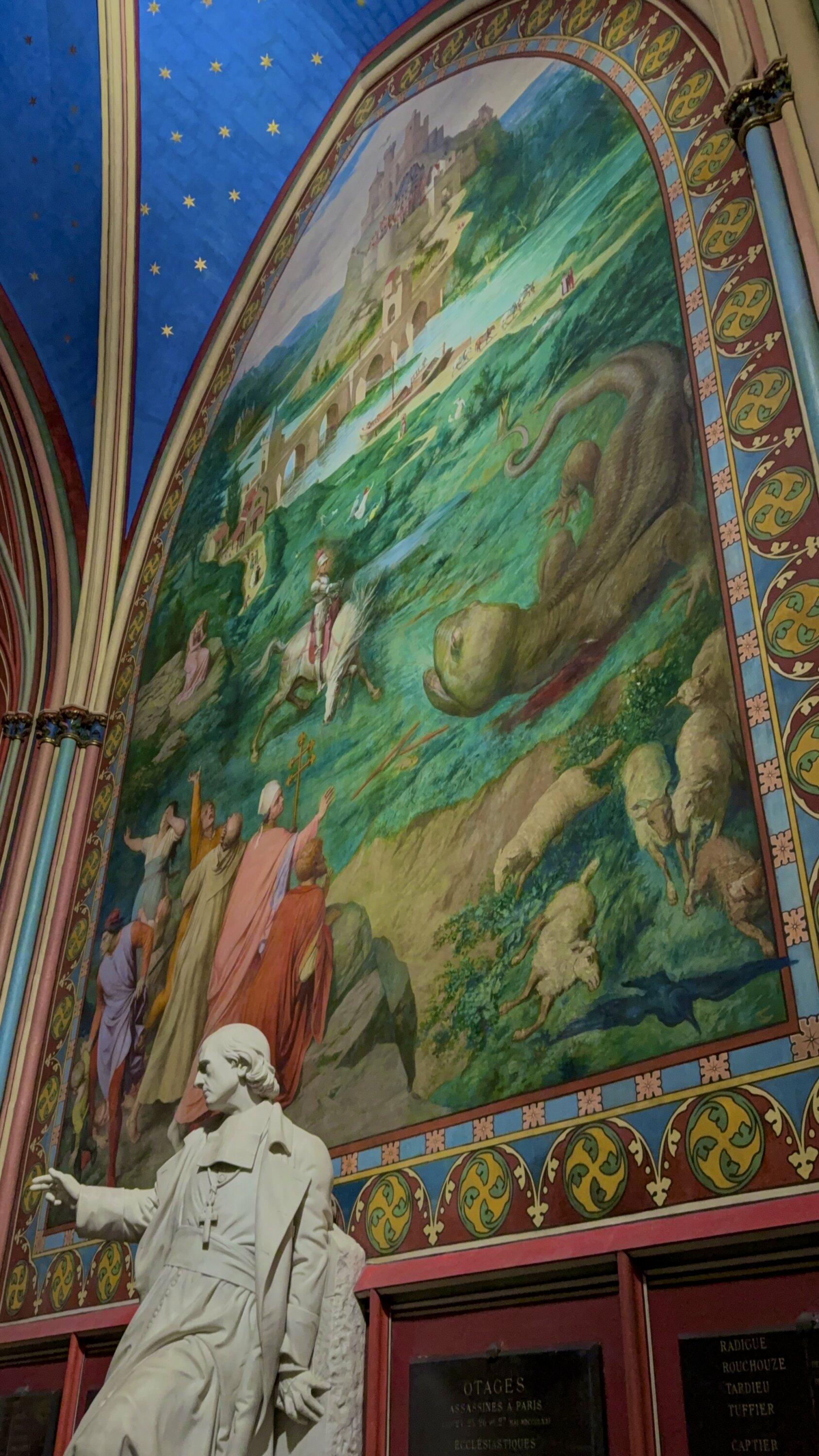
Visiting the Notre-Dame
- Is Notre-Dame Cathedral Open?
- In the near miraculous lapse of five years since the cathedral roof burned, Notre-Dame of Paris reopened her arms to once more receive her world wide parishioners, the entire public of those who love her, in December of 2024.
- While individuals can freely enter now, tours begin again in June and you can get so much more out of a visit with a knowledgeable guide who can show you where to look and what you’re seeing, and inform you with the kinds of stories and history that we have offered you here. Yet to accompany you in person allows for so much more depth depth and detail! We take great pleasure in doing just that, so book your tour with us today!

Notre Dame of Paris is chock full of fascinating things to notice and to ponder (and, we insist, so much better with a guide!), and it begins even before you even enter the church.
OUTSIDE
- On the ground before the doors, notice a discreet little plaque: here is the capital’s ground zero from which distances in all the land are measured. If that doesn’t speak for Notre-Dame’s place in the national consciousness, what does?
- You’ll also notice, looking closely downward on that plaza stone, names of streets, taverns, and houses that once wound through the dense urban labyrinth in front of the church, like the cut-throat Rue de Venise.
- Here too you’ll find the entry to the ancient crypt, which contains the remains of the Gallo-Roman town that thrived here in the middle of the Seine river, back when Paris was merely Lutetia. You’ll find the ruins of the public baths of that era, as well as medieval traces like that of the rue Neuve Notre-Dame, and the foundlings home, or even the later nineteenth-century tracings for the sewers.
- Statue of Charlemagne and Guards. While the 8th-9th century Charlemagne had little to do with what became the capital of the eventual nation of France, and still less to do with its medieval cathedral, nineteenth-century civic authorities thought it well to associate the Frankish emperor with the recently rebuilt church, right when Napoleon III (heir to Bonaparte) declared himself head of a new French Empire. The political statement is loud and clear!
THE FACADE
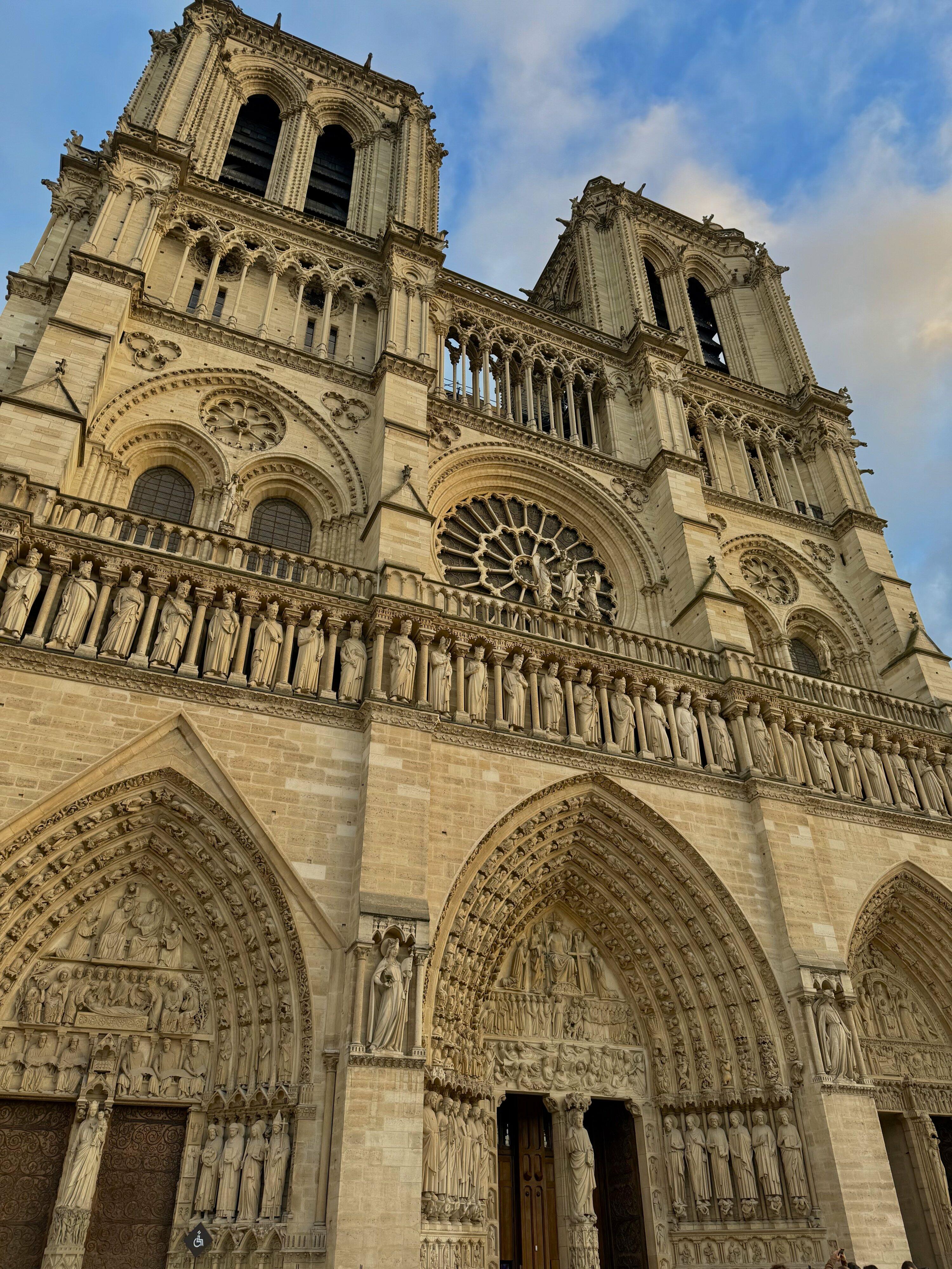
- Spire: At 96 meters high, it shoots towards the sky. While the one which fell in 2019 was a nineteenth-century creation, it replaced a 1220 spire that was dismounted for structural reasons in the eighteenth century. When disaster struck in 2019, after some shilly-shallying about a cutting-edge replacement, reason prevailed and the present spire is a reproduction of the one that perished in the fire.
- Towers: Eyes used to Gothic architecture often assume that the towers are unfinished, as they square off at the ends instead of rising, like the spire, in typical medieval style. This is not so, however, and you’ll notice all over the façade (the “face” of the building) an emphasis on horizontals, like the row of kings (see below), which underlines a rectangular look. As opposed to the soaring verticals that bring the eye heavenward, horizontals refer to wordly rule. Remember that the bishop was the king’s go-to man and deeply enmeshed with the royalty’s earthly might. It’s no surprise to read secular power written here between the lines.
- Kings: The rows of kings along the façade were meant to represent the Kings of Judah, who were said to be ancestors to the French royal house that fell with the Revolution. By that time, the authorities felt that crowns and fleur de lys were an offense to citizen eyes. The statues heads were thus lassoed off, and intended to be sold for rubbish. A royalist discreetly rescued them, burying them in his basement. Found again only in 1977 under a bank near the Opéra Garnier, the original heads were all facing east. They are now in safe keeping at the Cluny Museum of the Middle Ages
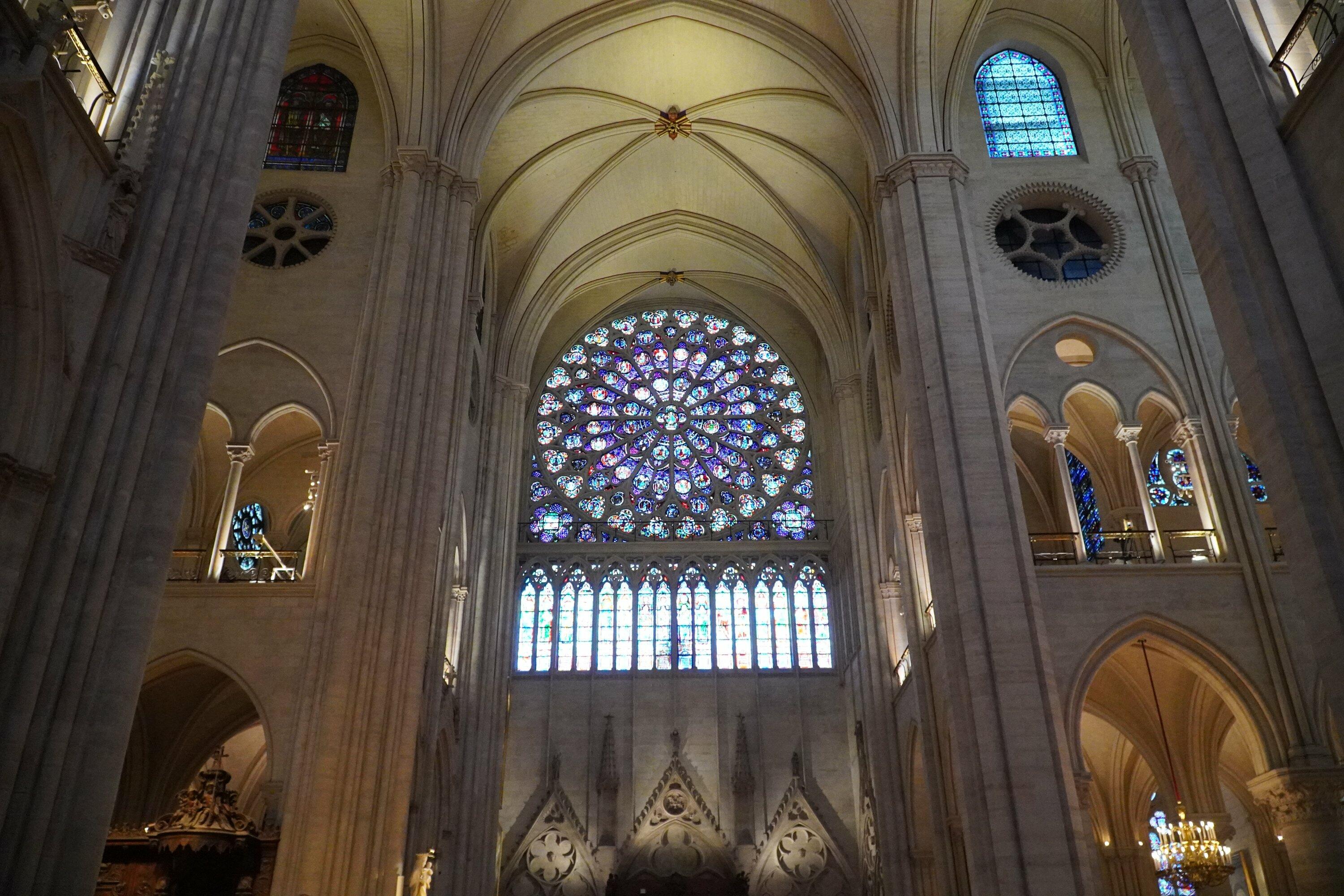
INSIDE
- Rose Windows: Notre Dame of Paris has three rose windows at the cardinal directions, except for the East which contains the altar area. Each is a symbol of the thornless rose, as the medieval mind considered the Virgin Mary to be.
- West: Among many other scenes, the westerly Rose shows images of the months and their seasonal chores, as well as their zodiac constellations, as if to remind the faithful as they file out, that God is at work in the universe, and particularly in the battle between vices and virtues that the window also has playing out before our eyes.
- North: This Rose, to the left as you face the altar, contains the most original stained glass, and was begun right in the middle of the construction of the nearby Sainte-Chapelle (a place we highly recommend you visit if you love this medieval art of light and color). Its images of the Virgin and the Old Testament herald the sacrifice commemorated at the altar.
- South: Offered around 1260 to the cathedral by the king, Louis IX, who built the Sainte-Chapelle, later known as Saint Louis, it was set in stone by the architect Pierre de Montreuil whose tomb read “Doctor of Stones.” As pendant to the northerly Rose, that of the south, with its Wise and Foolish Virgins, martyrs and saints, shows the pious how to live.
- Organ: While an organ was already in place by the 1180s, helping establish Notre-Dame’s musical bonafides, by the time the cathedral was enlarged, more pipes were needed to fill such an imposing space, and a new instrument was created early on in the fifteenth century. This one, rehauled and restored and then totally reconstructed in the eighteenth century (and saved in the Revolution for having played The Marseillaise), was once more renovated in the nineteenth century. Its 8000 pipes may have escaped the flames but between the smoke on one hand and the saving waters on the other, it is currently unusable.
- The Treasury: In these rooms you’ll find modern and medieval liturgical objects for church services as well as priestly vestments, mitres, rings, and reliquaries, even if the Crown of Thorns that came from the Sainte-Chapelle is only visible on Good Friday.
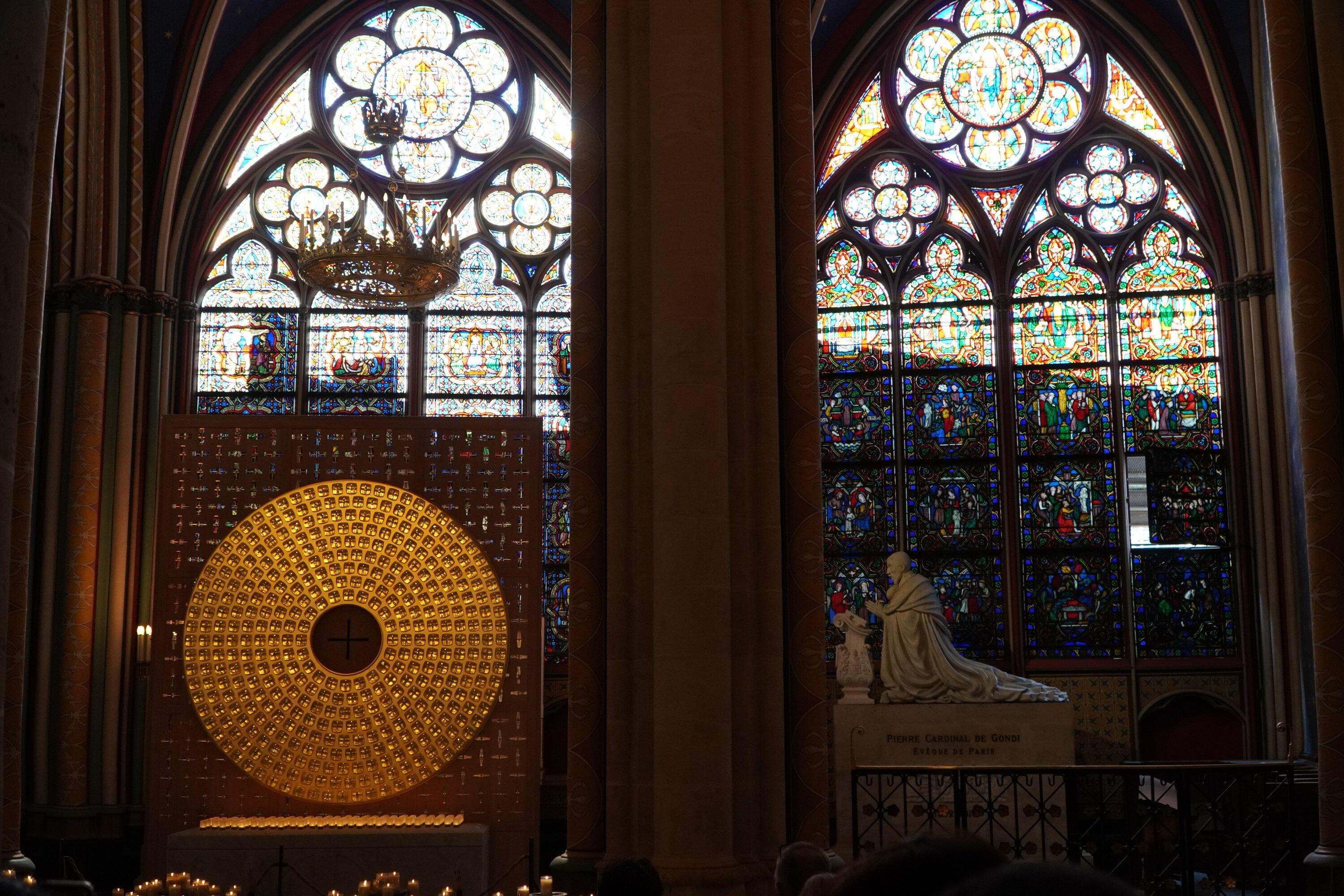
UP TOP
- If you climb to the rooftop, don’t let the gargoyles, or -- more properly-- the various imps and chimeras, fool you. These are mid nineteeth-century whimsy and not flights of medieval fancy. However that may be, they are a fantastic photo-opportunity, so click away for a superb selfie you’ll not soon forget.
- The real period gargoyles, or “gargouilles” are waterspouts (the French word for gargle is “garguoiller), built to rid the roof of water, preventing roof damage. Why are they in the form of grimacing monsters and the like? It is said that in the medieval imagination the cathedral was like the whole world, and in God’s creation there was room for everything, even the demons, but they are restricted to the outside and are reduced to evacuating waste.

Best Time to Visit Notre-Dame de Paris
- Choosing your moment to visit would depend on your own preferences for scheduling your day and how you want that day to look. Do you want an in-depth immersion into Gothic, along with the Sainte-Chapelle and Conciergerie for instance? We have just the tour for you! Or do you want to mix it up with some shopping and not overload the mind?
- If you decide on a morning visit, that is the best way to avoid the inevitable crowds.
- If you decide on the afternoon, that slanting light through the stained glass will make for the best souvenir photos.
How Long to Visit Notre-Dame
- At all events, budget for anywhere from 1 to 2.5 hours to spend there, depending on your level of interest.
- You might want to do a mini-visit of an hour if ancient architecture is not your passion, or if you have limited time in the capital with a list of other sights to see.
- You well my find yourself, however, completely bowled over by the atmosphere and the details, only some of which we mention above, in which case don’t be surprised if your time there somehow stretches on to over two hours, hours that you hardly see pass by.
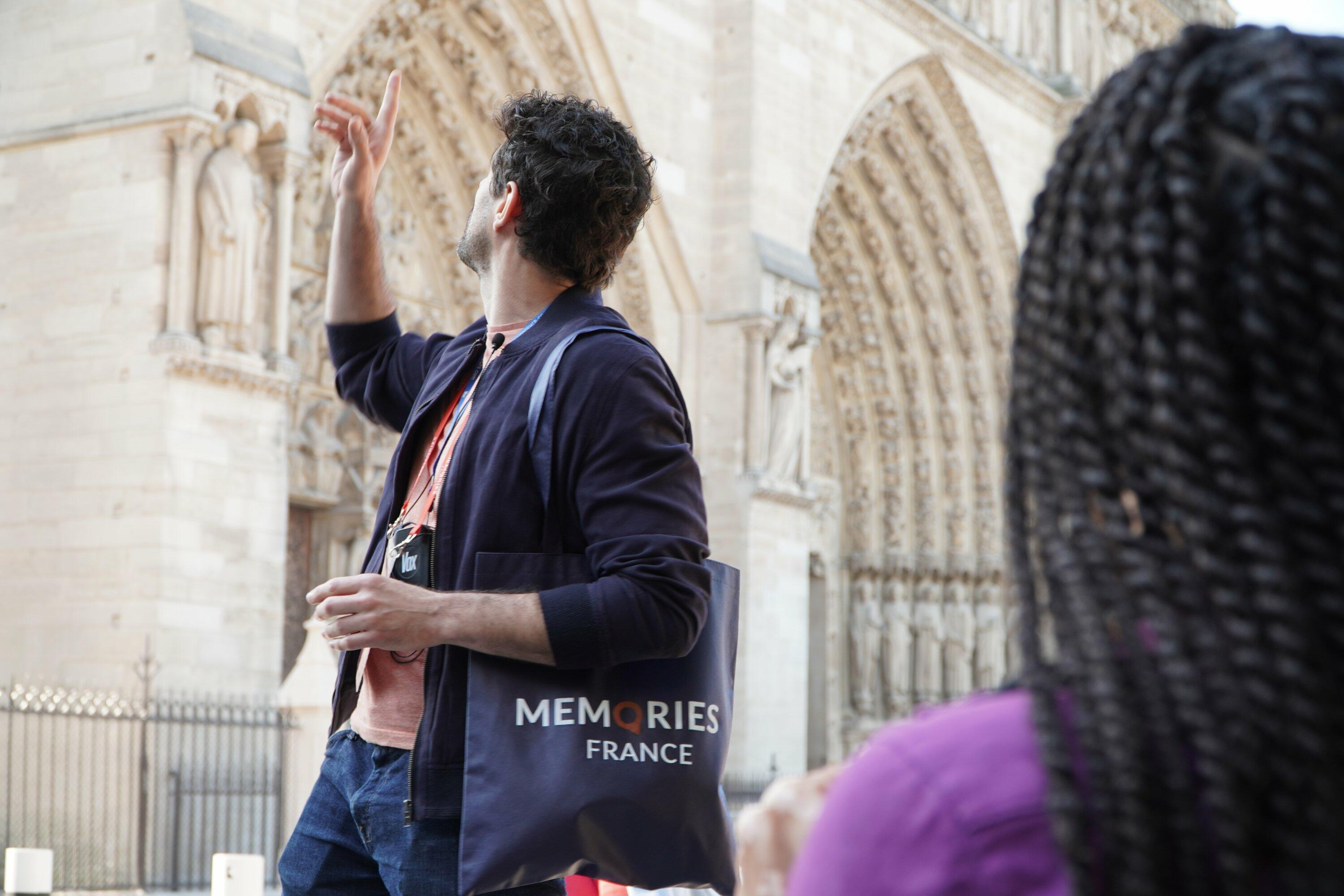
Conclusion
- However much time you decide to spend, make sure you at least do come in to see it, for how can you miss Paris’s most iconic church, the birth of full-blown Gothic architecture and one of its finest examples.
- And we have to repeat that your trip will absolutely be all the more memorable if you let Memories France take you through and inform your visit with our expert understanding of its meaning, beauty, and history.
- Whether or not you decide to book a tour with us, do come rest your feet and refill your water bottle at our information spot and boutique Paris Today on the nearby Quai de Gesvres. A stop where you can recuperate from sightseeing in the neighborhood, we’ll also be glad to answer questions and let you get your bearings as you decide your next steps.
Thank you so much for taking the time to read our blog! We are a small Paris-based tour guide company that prioritises a boutique personal experience where we can share our passion for our heritage and community with every individual that joins us. If you'd like to take a tour then head over to our website for an unforgettable trip to the city of lights. Also, check out our social media @memories.france (or click on the links below) for everything you could need to know for coming to Paris, from how to use the metro to coffee shops closest to each major monument, there is something for everyone!
Angelissa, Siobhan & the Memories France Family
Like what you see? Read our other blog posts here!
- The Ultimate Guide: 5 Fascinating Secrets of Marie-Antoinette’s Hamlet at VersaillesStep into Marie-Antoinette’s fairytale hamlet at Versailles — a rustic village of thatched cottages, hidden dairies, and political intrigue. Far more than a whimsical escape, the Queen’s Hamlet was a powerful stage for image, scandal, and survival. Discover the fascinating history behind this enchanting corner of Versailles.
- One Afternoon in Paris: A Walking Itinerary to Soak Up the City’s SpiritShort on time in Paris? This walking itinerary is designed to help you experience the heart of the city in just one afternoon — from iconic landmarks to postcard-perfect streets. Discover how to soak up the best of Paris on foot, in just a few unforgettable hours.
- How to Use the Paris Metro: A Simple 6-Step Guide for First-Time VisitorsNervous about navigating the Paris Metro? Our practical, step-by-step guide covers everything you need to know — from buying tickets and reading the map to tips on avoiding common mistakes — so you can travel like a local with confidence.
- Can’t-Miss Summer Events in Paris 2025: Your Guide to What’s OnFrom music festivals and national celebrations to sun-soaked riverside fun, Paris truly comes alive in the summer. In this guide, we’ve rounded up the top events happening in Paris in 2025 — including Fête de la Musique, Bastille Day, the final stage of the Tour de France, and more — so you won’t miss a moment of the city's vibrant summer energy.
- 5 Best Châteaux to Visit Near Paris (within 90 minutes by train)Escape the city and explore royal estates, romantic retreats, and grand architecture—each less than 90 minutes from Paris by public transport. These five stunning châteaux are perfect for a memorable day trip into French history.

